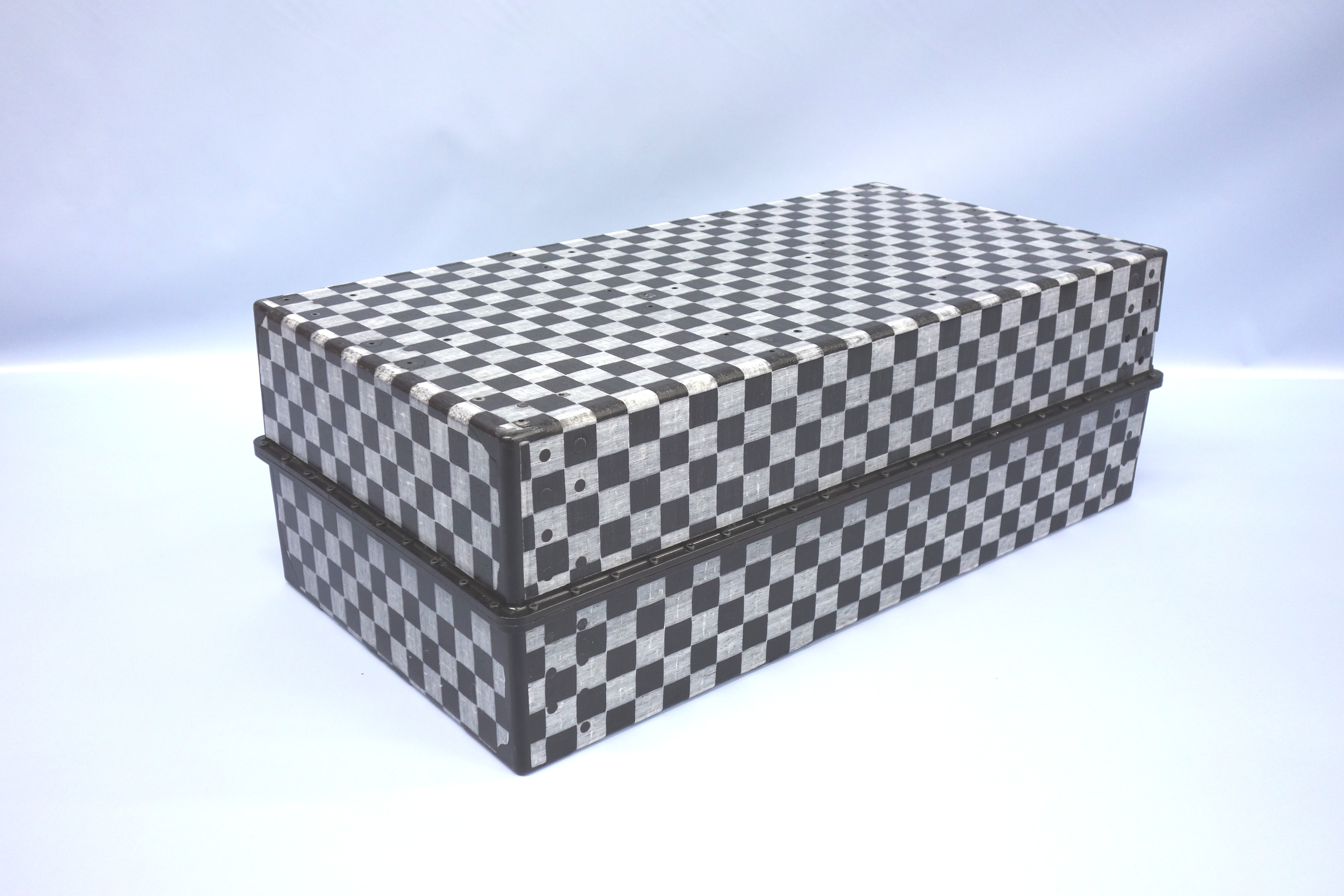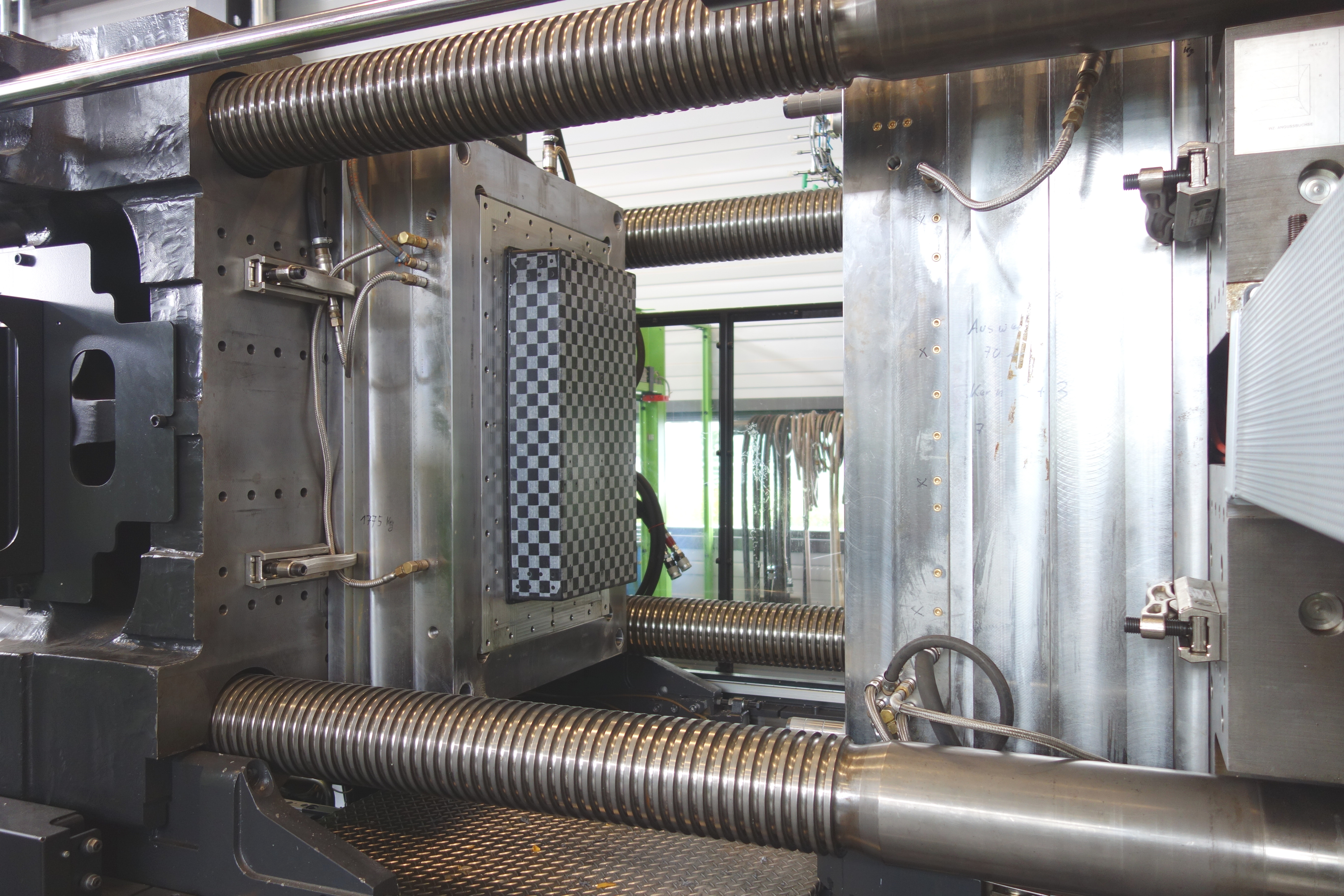Why cars don't fly – a lightweight solution for battery electric vehicles
A cost-efficient lightweight battery housing for battery electric vehicles has been developed at Fraunhofer LBF. Using this, it is possible to achieve a 40 percent reduction in weight compared to an aluminum housing. Despite the application of fiber-reinforced plastic composites, component cost is low due to a specially developed, highly-efficient manufacturing process and a stress equivalent structural design. The mechanical properties were validated in the GHOST project funded by the European Commission using finite element simulations during the design phase and validated under real conditions on a test bench. Further information will be given at JEC connect, June, 1 to 2, 2021.


Battery packs for electric vehicles (EVs) are very heavy due to the high quantity of battery cells needed if the targeted high driving ranges beyond 500 kilometers are to be achieved. The mechanical structure around the cells, such as cell holders and especially the housing, which is currently made of aluminum or steel, add up to a high total weight of several hundred kilograms in addition to the electrical components. Hence, despite the simplification of the electric drivetrain compared to that of internal combustion engine (ICE) vehicles, a major increase in vehicle weight can still be observed.
The supreme discipline of lightweight construction
Several car manufacturers have taken up this challenge and successfully reduced vehicle weight with the help of lightweight composite construction. However, the cost efficiency of fibre composites and manufacturing processes is still a fundamental problem in automotive lightweight construction. New classes of materials based on continuous fibre-reinforced thermoplastics (CFRTP) and novel hybrid manufacturing processes, however, enable new approaches, especially with regard to cost-efficient lightweight construction in electromobility. »Thanks to an immense variety of composite structural designs, materials and manufacturing technologies, designing with fiber-reinforced thermoplastics naturally has a large potential regarding lightweight construction«, explains Dr. Felix Weidmann, who is in charge of this research project at Fraunhofer LBF. »However, solutions must be cost competitive and address the critical aspect of fire resistance«.
A team of researchers from Fraunhofer LBF have applied their expertise in this field to produce a lightweight battery housing from continuous-fiber-reinforced thermoplastics in a three-dimensional (3D) sandwich design, using an innovative process that combines high-efficiency foam injection molding with CFRTP.
Ready in two minutes
The so-called in-situ CFRTP sandwich process is used, thus enabling the production of finished lightweight battery housings within two minutes without the need for post-processing. In addition, functions such as thermal insulation capability or flame resistance can be integrated in the same process step. The housing structure consists of two CFRTP cover layers and a connecting integral foam structure in between. The cover layers consist of unidirectional tapes, which are first woven creating a cross-ply layup and then consolidated, resulting in the striking checkerboard appearance. The laminate resulting from this process step is then 3D preformed and both sides inserted into a specially-developed hybrid foam injection mold. The controlled injection of an integral foam between the laminates in this way creates the three-dimensional structure of the housing with fiber composite cover layers and a foam core. The bonding of the CFRTP cover layers and foam core, which is of fundamental importance to the load-bearing capacity of the sandwich structure, is achieved in-situ during injection.
Sandwich construction for stress-equivalent battery housing designs
The stress-equivalent sandwich design results in the highest weight-specific mechanical properties, while at the same time reducing the material consumption of the fiber composite laminates used as the latter are only applied in highly stressed areas. The low component costs are hence achieved through the resulting reduction in material costs, in combination with the very short cycle times of the in-situ CFRTP sandwich process. The required mechanical properties were verified by finite element simulations during the design phase and were validated under real conditions on the testing bench (ISO 12405-2, 12405-3).
The project was funded by the European Commission as part of the H2020 funding program (H2020-GV-2016-2017/H2020-GV-2017).
Last modified:
 Fraunhofer Institute for Structural Durability and System Reliability LBF
Fraunhofer Institute for Structural Durability and System Reliability LBF